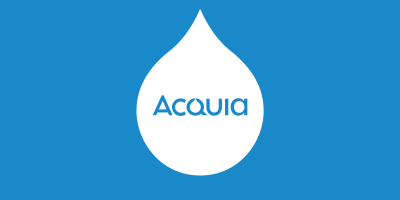Collection
Improving Marketing ROI with a Customer Data Platform (CDP)
Collection :
With the global customer data platform (CDP) market expected to reach $7.3 billion by 2027 according to IDC, it’s clear that businesses recognize there’s value in centralizing their customer data and they’re investing in martech solutions to do so. And while it’s certainly true that unified customer data must be at the foundation of customer experience (CX) strategy, a CDP does more than collect and store data. In fact, we’d argue that a CDP’s value comes from intelligently marrying that data, and what you do with the data once it’s been unified; it comes from activating that data for web personalization, email and mobile campaigns, digital advertising, customer support, and a host of other use cases.
Let’s dive in and explore how CDPs help marketers optimize the customer experience and achieve better ROI from their efforts.
Unlocking the insights held within a CDP
Before we get too far ahead of ourselves about reaping the rewards of using a customer data platform, we need to backtrack a moment with a reminder of the basic functions of a CDP:
- Data collection: A CDP aggregates customer data from all sources in an organization into a centralized data store.
- Profile unification: It unifies that data, cleansing and deduping it to create complete, unique 360-degree profiles for each customer.
- Segmentation: It enables marketers to define customer segments by past purchases, spending level, engagement with past campaigns, and other variables.
- Analysis: Once customer data is unified, it can be analyzed – preferably with help from artificial intelligence (AI) and machine learning (ML) capabilities – for deeper understanding of customer behavior and robust predictive analytics.
- Activation: It keeps the data updated and actionable across marketing campaigns.
It’s through the deeper insights into customers’ profiles – not just their demographics, but also their preferences and behaviors – that marketers can improve their campaigns and the overall customer experience. This is when more advanced personalization becomes possible, with consistently relevant messages across the entire customer journey, regardless of channel. Through rich customer insights, marketers can predict what promotions to run on which channel to which customer segments at what time to have the best success. But how do you get these insights?
Questions to ask of your customer data
Customer data can tell you a lot of things – but only if you know what questions to ask of it. Here are some questions a CDP can help you answer as you analyze your customer data for insights:
- Who are my most valuable customers? What specific attributes do they have? Who are lookalike customers with similar attributes but different engagement levels?
- Which customers are likely to churn? What offers have prevented churn in the past?
- Which customers are likely to buy? Which customers need a discount or other incentive to buy?
- Why are customers abandoning their shopping cart, not signing up for a subscription or account, or not booking a reservation?
- Which non-buyers are actually only seasonal buyers and should be reactivated?
Answering questions like these with effective data analysis can help you achieve loftier business objectives, like improved marketing ROI, better return on ad spend (ROAS), increased customer lifetime value (CLTV), greater customer retention and loyalty, and more. But that only happens if you put these insights to work and use them to determine the most relevant and impactful ways to engage customers.
Improving marketing performance with CDP
Once the data is analyzed and insights are derived, then comes the fun part for marketers: putting it into practice and acting on what they’ve uncovered. Examples of how to use actionable data from a CDP to improve marketing efficiency and performance include:
- Identifying highest value advertising channels: A CDP can help marketers be more strategic about their ad mix by determining which channels drove the most sales and would warrant future advertising dollars and which channels underperformed and may warrant reevaluation.
- Precise ad targeting: A marketer can use their CDP to segment their customers by ZIP code and likelihood to buy (as predicted through ML models), then send that target list to its ad platform partner to steer ad placement and thereby improve ROAS and return on campaign by being more efficient with ad buys. This also enables marketers to only use pricier cost per mille (CPM) display channels for existing customers who are not engaging in other channels.
- Reengagement: To convert one-time purchasers into repeat customers and boost CLTV, marketers can identify this segment in the CDP and determine the next best action or offer to engage with them.
- Attracting new customers: Armed with data on their existing customers, marketers can reduce customer acquisition costs (CAC) by understanding what content, offers, products, and channels have worked well to bring in new customers in the past and repeating that success – and adjusting what hasn’t worked historically. Marketers can also utilize look-alike models to attract and acquire more customers who fit their ideal demographic.
To see this come to life, we’ll share how one retailer has put their data into action.
How Clarks went from generic marketing to personalized experiences
Without a holistic view of each customer, shoemaker and retailer Clarks had to rely on “batch and blast” marketing campaigns to try to engage with customers. Clarks knew they could be more effective with their campaigns if they personalized them, but that was impossible given the state of their customer data. The retailer’s customer data was siloed in its retail point of sale (POS) system, e-commerce order management system (OMS), email marketing system, and analytical systems.
To bring all this customer, product, order, and behavioral data together, Clarks implemented Acquia CDP and gained an accurate and complete view of their customers. Using Acquia CDP’s analytical capabilities, Clarks has uncovered valuable insights to drive hyper-personalization campaigns. For example, Clarks can now understand which customers are most likely to buy when presented with a discount and can target just that segment with an offer, instead of its previous tactic of offering discounts to all customers. And with data connected across all touchpoints, online and offline, Clarks can adjust its multichannel engagement strategy. Now, instead of buying ads that show customers a product they already purchased, Clarks can discontinue that wasteful practice and improve its marketing efficiency.
While it’s not always easy to quantify the value of unifying and activating customer data, Clarks saw a 5:1 increase in ROAS for paid search ads and $1.4 million in revenue from a $500,000 campaign. Talk about driving real marketing ROI!
Next steps
As you can see, while the first step to realizing the value of a CDP is to use it to collect and unify all your customer data, the next step is using your CDP to segment, analyze, and activate your data to advance your marketing efforts. Only then can a CDP fuel improved marketing performance and ultimately drive revenue and growth for the business.
To learn more about using customer data to build more effective marketing campaigns, request a demo of Acquia CDP.


